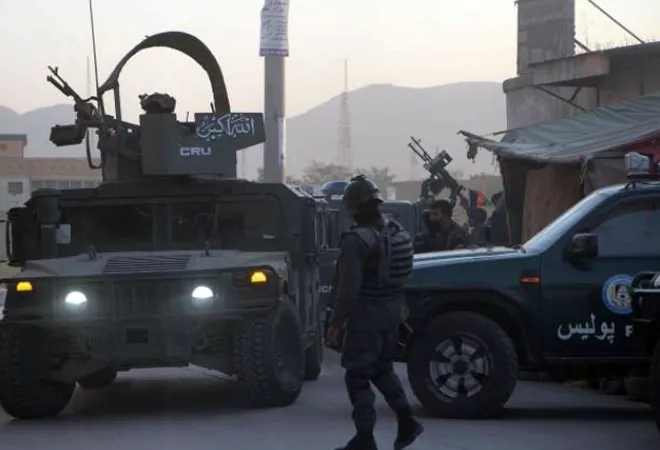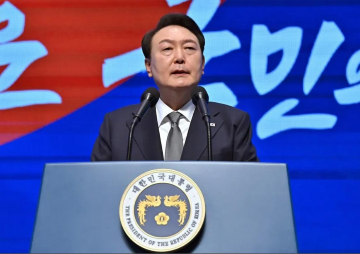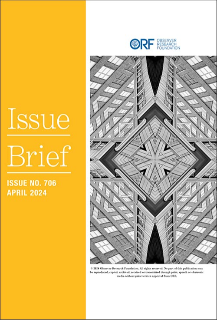The Islamic State Khorasan Province (ISKP) has claimed responsibility for the attacks on Kabul airport on August 26. The terror strike, which happened in the final days of the United States (US)-led withdrawal from Afghanistan, accelerated by the Taliban’s takeover, has reportedly claimed the lives of more than 13 US soldiers along with over 90 Afghan civilians. Prior to this, since the inception of the ISKP in 2015, only one US soldier had died in operations against the terror group.
Despite the Taliban being a predominant part of the Afghan jihadist landscape, it is imperative to remember that more than 20 terror groups have thrived in Afghanistan. Many of these groups are not Afghan and come from the neighbourhood due to the availability of safe spaces, resources, and access to financial tools such as smuggling, opium cultivation and arms trade. All of this is tied to a level of ideological cohesion and acceptance of the fact the Taliban reigns supreme — but this has not prevented deep differences and conflict among these groups.
The US withdrawal has thrown up a striking contrast between claims and reality. President Joe Biden has claimed that “al-Qaeda is gone”, and maintained that the US mission has been accomplished as it got the perpetrators of 9/11. At the same time, Khalil Haqqani, who, as per the US state department, has ties to al-Qaeda, gave a speech at a mosque in the middle of Kabul. Both Biden’s own intelligence apparatus, as well as the United Nations (UN), have highlighted that al-Qaeda very much remains. Even though the US and the Taliban signed a deal in January 2020 in which the latter agreed to disallow al-Qaeda, it has already backtracked on its commitment. And now with little US intelligence presence in Afghanistan, the Taliban-al-Qaeda nexus is free to surge once again.
Despite the Taliban being a predominant part of the Afghan jihadist landscape, it is imperative to remember that more than 20 terror groups have thrived in Afghanistan.
But there are others too. The Taliban views — and uses — groups such as ISKP as both a threat and an opportunity. ISKP has fought against the Taliban in Afghanistan, with both having different interpretations of what an Islamic state should look like. The Taliban offered itself as a force against ISKP, and this found resonance in both western and eastern capitals.
Afghan forces have regularly dismantled the hierarchies of ISKP. After the Taliban conquest, it reportedly executed former ISKP leader Abu Omar Khorasani. Other fighters are either going to merge into pro-Taliban factions in various provinces or lie low till they are able and capable to regroup.
Interestingly, the initial cadre of ISKP was widely known to be former Tehrik-e-Taliban Pakistan (TTP) fighters, pushed across the Durand Line into Afghanistan by Pakistan’s military operations. In its formative years, a Pashtun-heavy ISKP was also infiltrated by Pakistan’s Inter-Services Intelligence (ISI), which offered weapons and money.
President Joe Biden has claimed that “al-Qaeda is gone”, and maintained that the US mission has been accomplished as it got the perpetrators of 9/11.
Despite Pakistan’s blessing for the Afghan Taliban, TTP has often conducted attacks inside Pakistan and has become emboldened on the back of the victory of the Afghan Taliban. The group’s leader, Noor Wali Mehsud, appeared on CNN, saying that the Taliban’s victory is a victory of all Muslim people. TTP is a wild card in this theatre. Pakistan hosts most of the Taliban’s shuras, and backs the Haqqani Network, the “sword arm” of the Taliban that now reportedly controls Kabul. But Pakistan is yet to gain leverage over the TTP.
One of the best methodologies to view other terror groups in Afghanistan is to investigate the country’s jihad ecosystem from the outside in. TTP is not only a made-in-Pakistan issue for Pakistan itself, but has also dragged China in. A recent terror strike in Pakistan’s Khyber Pakhtunkhwa that killed nine Chinese engineers was blamed on TTP along with the East Turkistan Islamic Movement (ETIM), a group having ties with Uyghur extremism in China’s restive Xinjiang province. Beijing’s push to control ETIM is not new and has previously brought it at odds with its ally, Pakistan.
In its formative years, a Pashtun-heavy ISKP was also infiltrated by Pakistan’s Inter-Services Intelligence (ISI), which offered weapons and money.
Russia's President Vladimir Putin has said he did not want militants from Afghanistan coming into his country. Islamists from places such as Chechnya and Dagestan have previously joined groups like ISIS and al-Qaeda while other mujahideen from the Arab world along with those from Central Asia and beyond also joined the Bosnian war between 1992 and 1995. For both China and Russia, domestic considerations have played a significant role in their decision to build a rapport with the Taliban.
In all of this, the country that gets short-changed significantly is India. Groups such as Jaish-e-Mohammed (JeM) and Lashkar-e-Taiba (LeT), designed to target Kashmir, have found little attention in the ongoing international discourse around Afghanistan. Much like the Taliban, the LeT and the JeM also run on the support of the “Rawalpindi Shura”, with the Pakistan military and its intelligence cohort in the ISI offering support in both cash and kind. Reports of ISI chief Lieutenant-General Faiz Hameed meeting the Taliban in Kandahar and JeM chief Mufti Rauf meeting the Taliban’s deputy chief and Mullah Omar’s son, Mullah Yaqoob, showcase the web that Pakistan has managed to create for itself in Afghanistan. But even as Pakistan sets itself up once again, in Steve Cohen’s memorable words, to negotiate with the world with a gun to its own head, the real victims remain the Afghans.
Reports of ISI chief Lieutenant-General Faiz Hameed meeting the Taliban in Kandahar and JeM chief Mufti Rauf meeting the Taliban’s deputy chief and Mullah Omar’s son, Mullah Yaqoob, showcase the web that Pakistan has managed to create for itself in Afghanistan.
How the Taliban handles this heterogeneous landscape and these complexities, while attempting to politically mainstream itself, will be its biggest test. As scholar Harsh Pant noted, in Afghanistan, there is never an endgame, but always a game in progress.
This commentary originally appeared in Hindustan Times.
The views expressed above belong to the author(s). ORF research and analyses now available on Telegram! Click here to access our curated content — blogs, longforms and interviews.




 PREV
PREV


